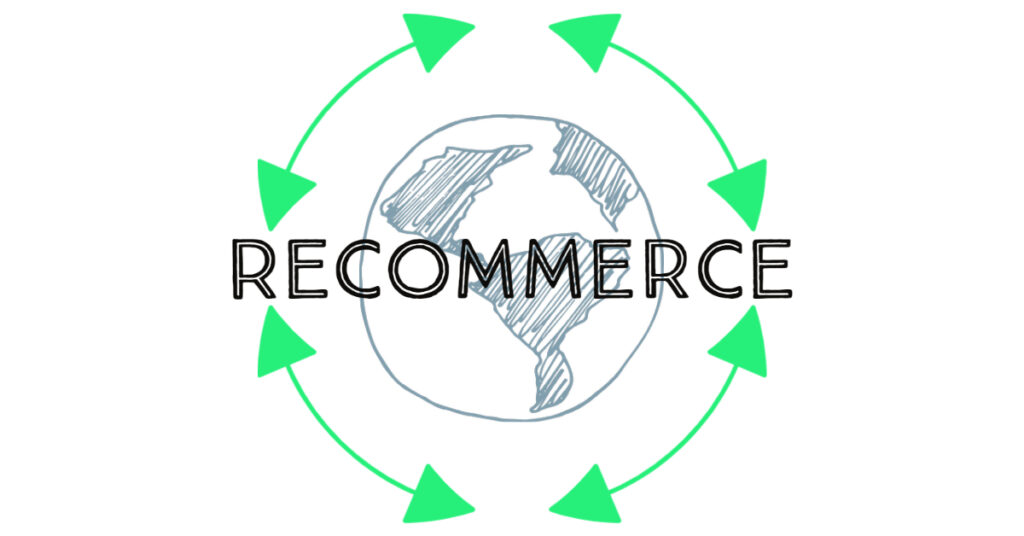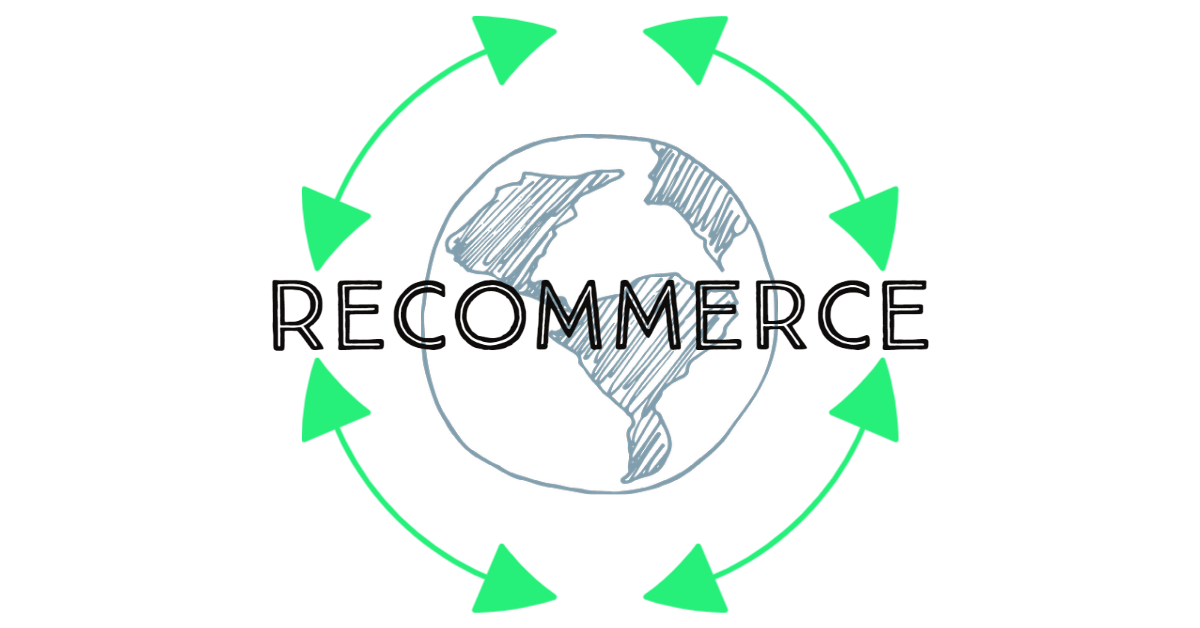Buying and selling pre-owned products is on the rise, so much so it now has a name–recommerce. And we think it’s great. For one, recommerce offers a sustainable and cost-effective alternative to traditional retail. It promotes the reuse of items, reduces waste, and aligns with changing consumer attitudes toward ownership and sustainability.

Let’s discuss the state of affairs with the current recommerce space in more detail.
What is Recommerce?
Recommerce, short for “reverse commerce,” refers to the process of buying and selling used or pre-owned products. It involves resale items that have already been purchased and used by their original owners. It typically occurs through various channels such as online marketplaces, consignment stores, dedicated recommerce platforms, or even physical thrift shops.
Recommerce Currently
The industry has gained significant traction in recent years due to several factors. First, it aligns with the growing trend of sustainability and reducing waste. By extending the lifecycle of products, reverse commerce helps lessen the demand for new production, conserves resources, and minimizes environmental impact. Second, it offers financial benefits to both sellers and buyers. Sellers can earn money by selling unwanted, used items, while buyers can find more affordable options than purchasing products they need.
Recommerce encompasses a wide range of products, including but not limited to clothing, accessories, electronics, furniture, books, and toys. Some recommerce platforms specialize in specific categories, such as luxury fashion or high-end electronic gadgets, while others offer a broader selection.
Recommerce Platforms
Yes, many professional recommerce platforms are out there, and Gadget Salvation would be a great example of a pre-owned tech buyback recommerce platform.
To facilitate reverse commerce transactions, platforms typically provide the following options:
- Listing products
- Managing transactions
- Communications
- Handling payments
- Taking care of shipping or pickup arrangements.
Some platforms may also authenticate or verify the condition of items to ensure quality and buyer satisfaction.
Undoubtedly, recommerce has become a popular and sustainable alternative to traditional retail, benefiting both consumers and the environment.
Is there a Future for Recommerce?
Indeed, there is a bright future for reverse commerce. The industry has been experiencing significant growth in recent years, and this trend is expected to continue in the future. Several factors contribute to the promising outlook for recommerce:
- Sustainability: As environmental concerns continue to rise, consumers are becoming more conscious about the impact of their consumption habits. Recommerce aligns with sustainability principles by promoting product reuse and recycling, reducing waste, and minimizing the carbon footprint of manufacturing new items.
- Changing consumer attitudes:¶ÿThere is a shift in consumer attitudes towards ownership and consumption. Many people are now more interested in experiences than material possessions, which has increased their interest in sharing, renting, and buying second-hand products. The rise of minimalism and the desire for unique and vintage items also contribute to the popularity of reverse commerce.
- Cost savings: Recommerce offers financial benefits to both buyers and sellers. Buyers can find products at lower prices compared to buying new, while sellers can earn money by selling their used items. The economic uncertainty and financial constraints caused by events like the COVID-19 pandemic have further amplified the appeal of recommerce.
- Technology and digital platforms:¶ÿThe advent of marketplaces and dedicated online recommerce spaces has made it easier for individuals to buy and sell used items. These platforms provide user-friendly interfaces, secure payment systems, and logistical support, making the process of buying and selling pre-owned goods more accessible and convenient.
- Expansion of recommerce categories:¶ÿWhile reverse commerce initially gained traction in the fashion industry, it has expanded into various other product categories such as electronics, furniture, books, and more. As more industries and product types embrace reverse commerce, it broadens the scope and potential of the market.
- Increased awareness and acceptance: Recommerce has gained mainstream attention and general public approval. Many major brands and retailers now incorporate recommerce strategies into their business models. Some brands even have dedicated programs for buying back and reselling their products, creating a closed-loop system.
Given these factors, recommerce is likely to continue growing in the future. The industry will likely see further innovation, technological advancements, and increased collaboration between traditional retailers, brands, and more recommerce platforms. It provides an opportunity for businesses and individuals to embrace sustainability, save money, and contribute to a circular economy.
Bottom Line
Recommerce is now an important and growing part of the global economy. And it will continue to grow and evolve. With the growth of recommerce sites, businesses and individuals get more tools to aim for eco and financial sustainability while closing the loop.¶ÿFinally, if you have an unwanted gadget to sell, contact Gadget Salvation for an instant estimate!










